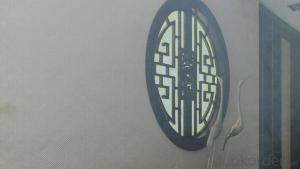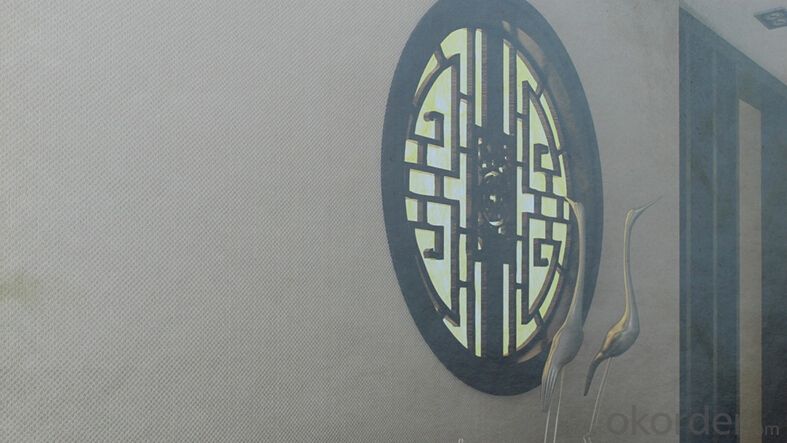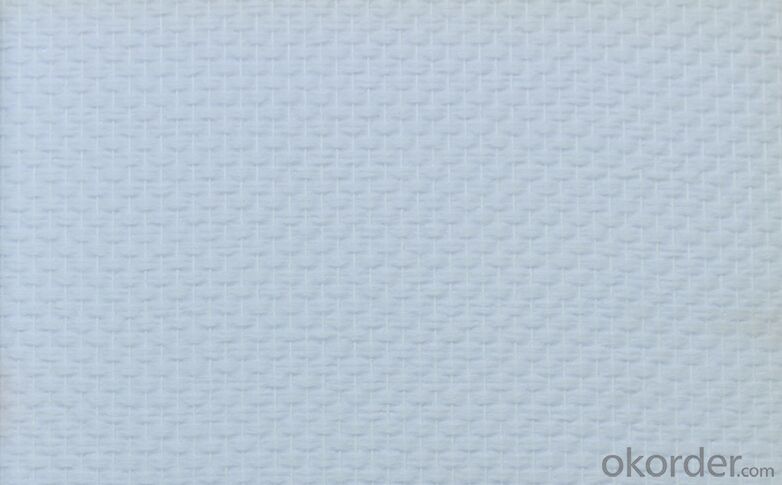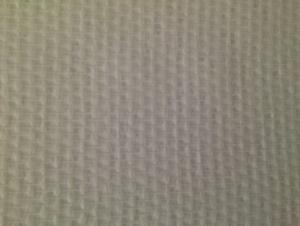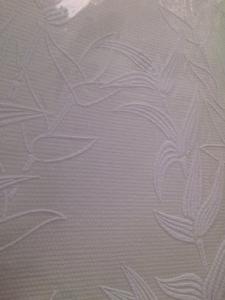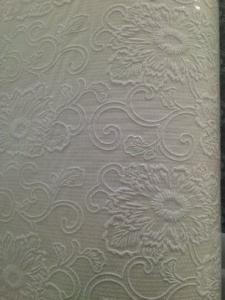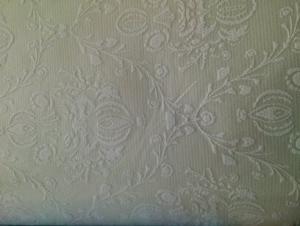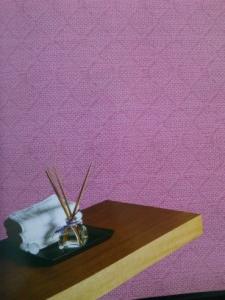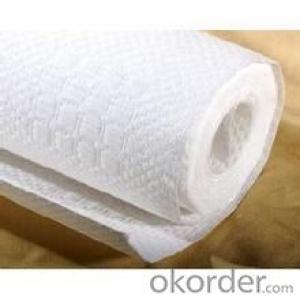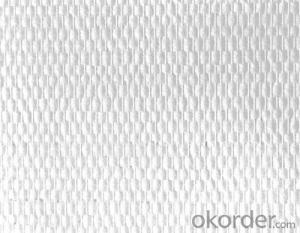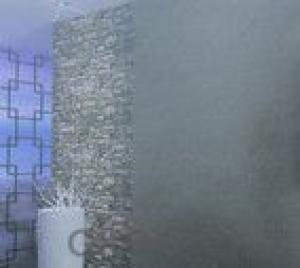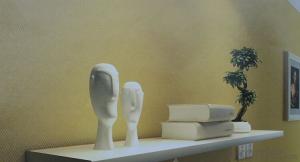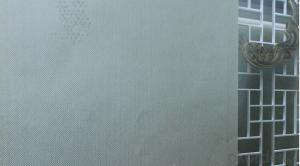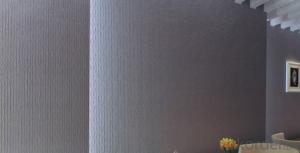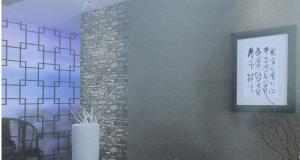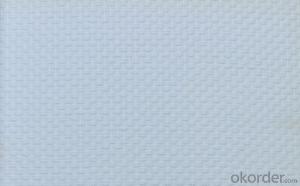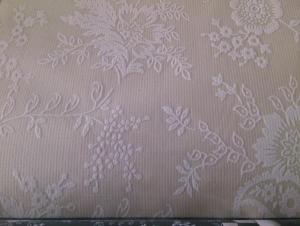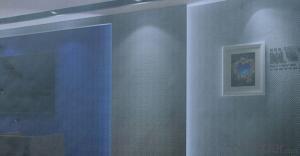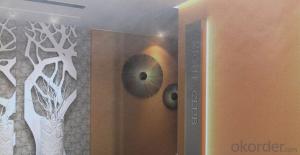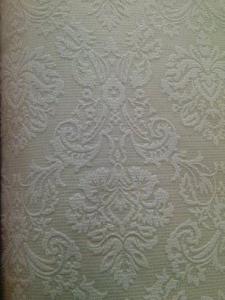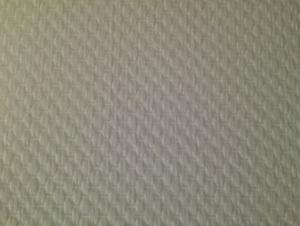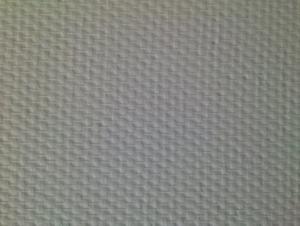Fiberglass Wallcovering Cloth - High-Tech 81703 Wall Fabric
- Loading Port:
- Shanghai
- Payment Terms:
- TT OR LC
- Min Order Qty:
- 100 m²
- Supply Capability:
- 100000 m²/month
OKorder Service Pledge
OKorder Financial Service
You Might Also Like
High-tech Fiberglass Wallcovering Cloth Wall Fabric 81703
Specification of Wallcovering Cloth
.Environment-friendly
.Flame retardent
.Air permeability
.Waterproof
.Anti-corrosion
.Imcomparable strength
.Abundant patterns and colors
.Long life time
Packing Details
.Width:1m
.Length:25/50m
.Each roll of wallcovering cloth is wrapped in a shrinking polythene film,then put in carton
Introduction of wallcovering Cloth
Fiberglass wallcovering cloth,that combines the versatility of paint,from latex to epoxy,with the
strength and benefits of woven fiberglass textile yarns to meet the most demanding wall finish
requirments.Fiberglass textile yarns,as a kind of natural materials,are woven into various textures
and patterns and then treated with a natural starch binder for dimensional stability during the hanging
process.
Compared with traditional wall papers,fiberglass wall covering cloth has the following advantages:
Environment friendly,Flame Retardant,Air Permeability,Shock Resistance,Waterproofing,Anti-corrosion,Abundant Colors&Patterns.
Product Show
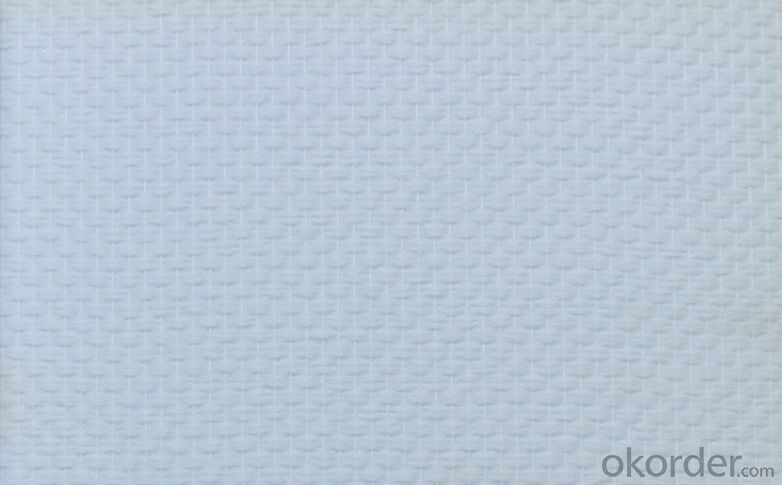
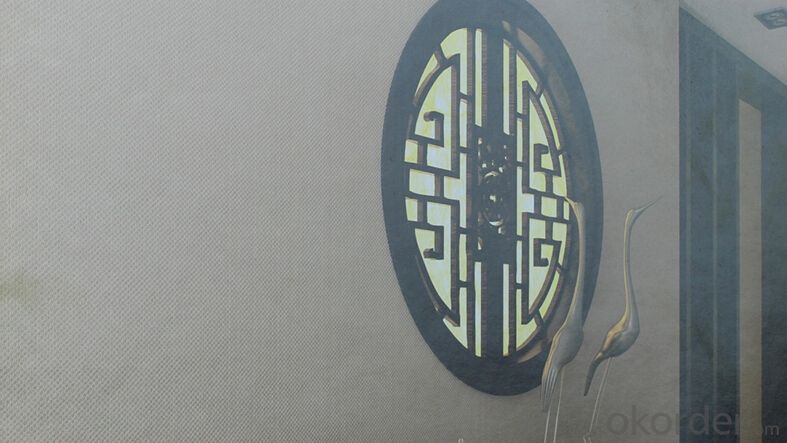
Application of Wallcovering Cloth
As a high-tech indoor decorating material,fiberglass wallcovering cloth is widely used in resident homes,
offices and shops and even cinemas,theatres,hotels and hospital faclilties,air ports,office buildings,shopping centers and schools.
Test Report
Our product has passed test by SGS as follows:
EN 12956:for determination of dimensions,straightness,spongeability and washability.
EN 12149:for determination of magration of heavy metals and certain other elements,of
vinyl monomer and of formaldehyde release.
EN 20105-B02:light solidity.
Our products had passed test of Fire Retardancy M1 Class by LINE
- Q: Does fiberglass wallcovering cloth have any health risks associated with it?
- Potential health risks are posed by fiberglass wallcovering cloth, mainly because of the presence of tiny glass fibers within it. These fibers can become airborne if the material is handled or disturbed, and when inhaled, they can cause irritation to the respiratory system. Symptoms such as coughing, wheezing, throat irritation, and skin irritation may occur as a result of short-term exposure to fiberglass fibers. Nevertheless, if proper precautions are taken, the health risks associated with fiberglass wallcovering cloth are generally low. It is important to use protective gear like gloves, goggles, and a mask when working with or removing fiberglass cloth. Measures such as wetting the material before handling it or utilizing a vacuum cleaner with a HEPA filter can also help minimize the release of fibers and reduce the risk of exposure. It is important to note that long-term exposure to fiberglass fibers has been linked to more serious health problems, including lung disease and cancer. However, these conditions are primarily associated with occupational exposure, where individuals are consistently exposed to high levels of fiberglass over extended periods of time. In conclusion, while there are some health risks associated with fiberglass wallcovering cloth due to the potential release of glass fibers, these risks can be minimized by following proper safety precautions. If you have concerns about working with fiberglass cloth, it is advisable to seek advice from a professional or consider alternative materials.
- Q: Can fiberglass wallcovering cloth be used in schools and educational facilities?
- Yes, fiberglass wallcovering cloth can be used in schools and educational facilities. It has several advantages that make it an ideal choice for these environments. Firstly, fiberglass wallcovering cloth is highly durable and long-lasting. It can withstand heavy traffic, frequent cleaning, and general wear and tear, which is common in schools and educational facilities. This ensures that the walls remain in good condition for a longer period of time, reducing the need for frequent maintenance and renovation. Secondly, fiberglass wallcovering cloth is resistant to mold, mildew, and stains. Schools and educational facilities often have high humidity levels and are susceptible to moisture-related issues. By using fiberglass wallcovering cloth, the growth of mold and mildew can be significantly reduced, creating a healthier environment for students and staff. Furthermore, fiberglass wallcovering cloth is fire-resistant. Safety is a top priority in schools, and this material can help to prevent the spread of fires. It has a high fire rating and can withstand extreme temperatures, providing an extra layer of protection. In addition, fiberglass wallcovering cloth is available in a wide range of designs, colors, and textures. This allows for customization and creativity in interior design, creating a visually appealing and stimulating environment for students. It can also contribute to the overall aesthetic of the facility, enhancing the learning experience. Lastly, fiberglass wallcovering cloth is easy to install and maintain. It can be applied directly to the walls, saving time and labor costs. It is also easy to clean and can be wiped down or washed without causing damage to the material. Overall, fiberglass wallcovering cloth is a suitable choice for schools and educational facilities due to its durability, resistance to mold and stains, fire-resistant properties, design options, and ease of installation and maintenance.
- Q: Can fiberglass wallcovering cloth be used in wet areas, such as bathrooms?
- Certainly! Fiberglass wallcovering cloth is indeed applicable for wet environments like bathrooms. Its remarkable water-resistant qualities make it an ideal choice for spaces with extensive moisture. Moreover, fiberglass effectively resists the growth of mold and mildew, a prevalent concern in bathrooms. Furthermore, the maintenance and cleaning of fiberglass wallcovering cloth are effortless, enabling it to endure the humidity and sporadic splashes common in wet areas. Nevertheless, it is crucial to ensure meticulous installation and sealing to avert any water seepage behind the wallcovering.
- Q: Is fiberglass wallcovering cloth suitable for use in basements or below-grade areas?
- Yes, fiberglass wallcovering cloth is suitable for use in basements or below-grade areas. Fiberglass is a durable and moisture-resistant material that can withstand the potentially humid and damp conditions commonly found in basements. It is also resistant to mold and mildew growth, making it an ideal choice for areas with higher moisture levels. Additionally, fiberglass wallcovering cloth is easy to clean and maintain, making it a practical option for basements or below-grade areas where cleanliness is important.
- Q: Is fiberglass wallcovering cloth eco-friendly?
- Fiberglass wallcovering cloth possesses a certain degree of eco-friendliness. Its composition consists of natural elements like silica sand, limestone, and soda ash, which are renewable and widely available resources. Moreover, compared to alternative wallcovering materials, fiberglass products have a prolonged lifespan, thus reducing the need for frequent replacements and minimizing waste. Nevertheless, it is worth noting that the production process of fiberglass cloth may involve the utilization of chemicals and energy-intensive manufacturing techniques. In addition, certain fiberglass manufacturing procedures emit harmful emissions and generate waste that can negatively impact the environment. To ensure the eco-friendliness of fiberglass wallcovering cloth, it is imperative to consider the entire lifecycle of the product, encompassing production, transportation, installation, and disposal. Choosing manufacturers that adhere to sustainable practices, for instance, employing recycled materials and reducing energy consumption, can further augment the environmental advantages of fiberglass wallcovering cloth.
- Q: Can fiberglass wallcovering cloth be used in conjunction with acoustic panels?
- Yes, fiberglass wallcovering cloth can be used in conjunction with acoustic panels. The cloth acts as a protective and decorative layer over the acoustic panels, while also enhancing their sound absorption properties.
- Q: Does fiberglass wallcovering cloth have any odor or off-gassing?
- Fiberglass wallcovering cloth typically has no odor or off-gassing due to its non-porous and inert nature, making it a safe and odor-free choice for interior applications.
- Q: Can fiberglass wallcovering cloth be painted?
- Certainly! Fiberglass wallcovering cloth is indeed paintable. Nevertheless, it is vital to adequately prepare the surface prior to paint application to guarantee adhesion and durability. The usual course of action for painting fiberglass wallcovering cloth usually encompasses surface cleaning, sanding or scuffing to achieve a coarse texture for improved paint adhesion, and utilizing a fiberglass-specific primer. Once the primer has dried, you can then proceed with applying your preferred paint color or finish. It is crucial to refer to the manufacturer's instructions for precise recommendations on painting fiberglass wallcovering cloth and to ensure the use of paint that is compatible with the material.
- Q: What are the different types of fiberglass wallcovering cloth?
- In the market, one can find a variety of fiberglass wallcovering cloth options. These options differ in terms of composition, texture, and intended use. A popular choice is woven fiberglass cloth. This type is created by weaving thin strands of fiberglass together, resulting in a strong and durable material. Woven fiberglass cloth is commonly used as a foundational layer for wallcoverings, providing stability and strength to the final product. Another option is non-woven fiberglass cloth. This variation is made by bonding or needle-punching fiberglass fibers together, resulting in a textured and flexible material. Non-woven fiberglass cloth is often used in wallcoverings that require a softer and more textured appearance. The texture of the surface can also classify fiberglass wallcovering cloth. There are options available such as smooth, textured, embossed, or patterned fiberglass cloth. These variations allow for different aesthetic choices and can add depth and visual interest to wallcoverings. Furthermore, fiberglass wallcovering cloth can be categorized based on its fire resistance. Certain types of fiberglass cloth are specifically designed to possess fire-resistant properties, making them suitable for use in areas where fire safety is a concern. Overall, the diverse range of fiberglass wallcovering cloth types offers various options for different applications. Whether one requires durability, texture, aesthetics, or fire resistance, there is a type of fiberglass wallcovering cloth available to cater to specific needs and preferences.
- Q: Does fiberglass wallcovering cloth come in different colors and patterns?
- Fiberglass wallcovering cloth does indeed come in a variety of colors and patterns. Although its primary purpose is to offer a long-lasting and resilient wall covering solution, manufacturers recognize the significance of aesthetics as well. Consequently, fiberglass wallcovering cloth is offered in an extensive selection of colors and patterns to accommodate diverse design preferences and interior styles. Whether your aim is to achieve a minimalist look with a solid color or to add visual interest with a patterned design, there are fiberglass wallcovering cloth options available that cater to your specific requirements. These alternatives enable you to enhance the appearance of your walls while simultaneously benefiting from the durability and practicality of fiberglass wallcovering cloth.
Send your message to us
Fiberglass Wallcovering Cloth - High-Tech 81703 Wall Fabric
- Loading Port:
- Shanghai
- Payment Terms:
- TT OR LC
- Min Order Qty:
- 100 m²
- Supply Capability:
- 100000 m²/month
OKorder Service Pledge
OKorder Financial Service
Similar products
Hot products
Hot Searches
Related keywords
